The building of the "ROAD MARKER"
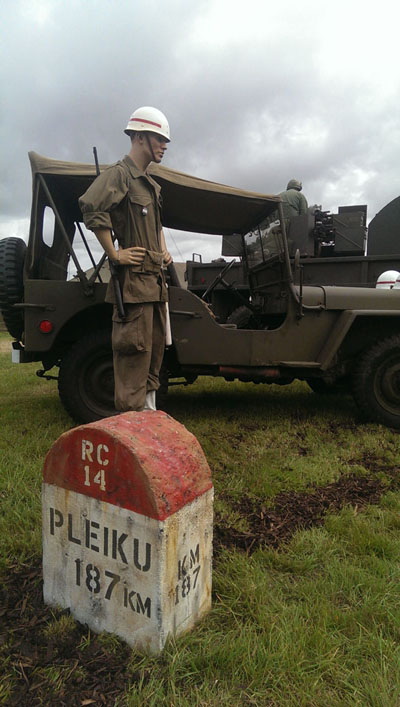
After having
spent years going to shows with my
Dodge and having loads of cargo space to carry my
display equipment,
I was now faced with having to dramatically cut
down what I took due to the load capacity of the Jeep.
I had to try to
think of something small and portable but which would
be instantly recognisable by veterans, historians,
re-enactors and collectors.
The Unit for which the Jeep has been restored is a
French Road Traffic Company in Indochina. This in a way
gave
me an easy and effective solution to my problem- a
French road marker typical of the colonial routes of
Indochina. The Jeep positioned next to it would give me an instant small
diorama.
Despite remembering them as a child in France,
I had no idea of sizes and markings. This was a job for GOOGLE!
I gathered as many photos of road markers in Vietnam as
possible. I researched the French markings and size, which was a
lot more difficult!
The build was fairly easy and used
skills I obtained during my years of model making.
The four sides were built out of plywood, with
a rounded
edge at the top of the two larger panels to give it its
shape.
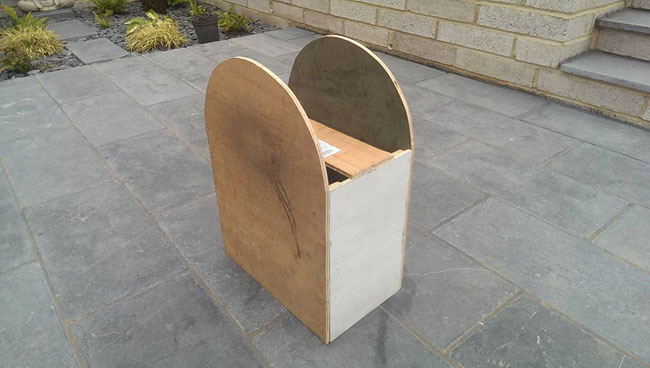
I wanted to keep it as light as possible and give
it a battered look. So the round section was built out
of bits polystyrene covered with a layer of "papier-mâché"
(a mixture of PVA glue, water and old newspaper).
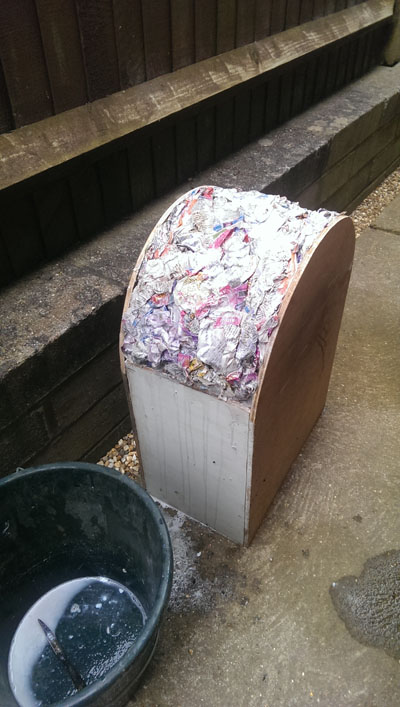
Once
dry, a small coat of pollyfilla was applied to give it
some rigidity. Later, a layer of PVA glue was brushed on
and sand and very small amount of gravel were sprinkled
on it to give it a texture.
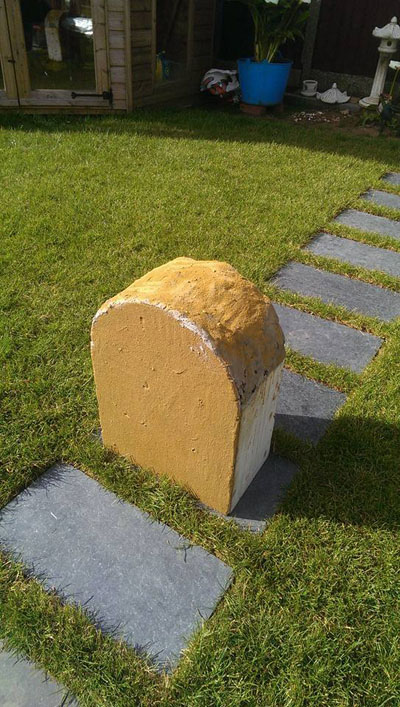
Once dry, a
further couple of coats of PVA glue was brushed on to bond
everything down and smooth down the texture. Damage to it
was done with an angle grinder and electric drill, and
weathered with sand and PVA glue. The lot was painted
off white, red, and was weathered down by several coats
of different colour off whites and reds as well as black
and ochre washes.
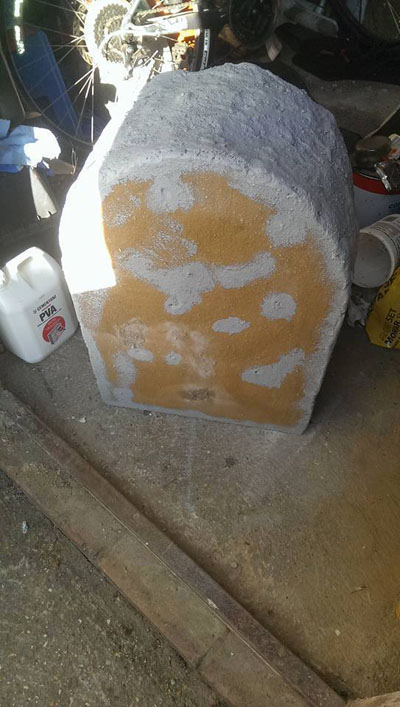
The dimensions of current plastic ones are 650
x 470 x 380 mm, but this does include a wider base which
was not always seen on the Indochina/Vietnamese
one.
http://www.signaclic.com/borne-kilometrique-traditionnelle-sans-ligne-de-texte-art_fr_3877.html
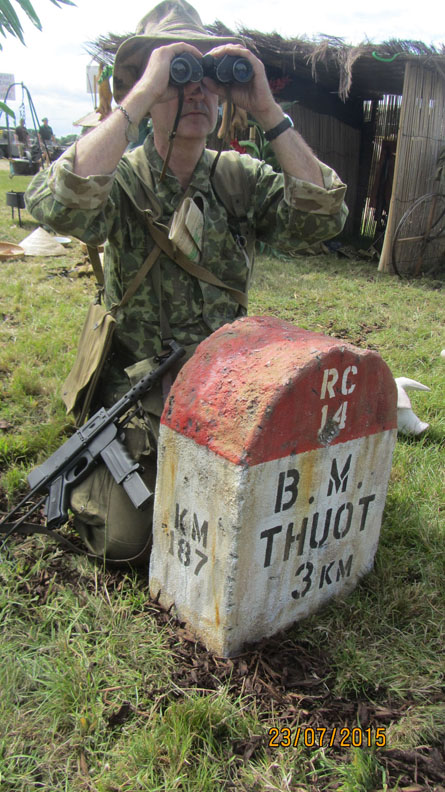
The one I have made has been scaled down a little for
transport and as this is the type without the wider
base H560 x L400 x W240mm. I do also believe that the ones
in Indochina may not have been 100% the same and
several types may have been used.
Something else I had a problem with was identifying, how
they calculated the kilometers distance on the each side of the marker.
The way it works is that the distance shown: is the distance
between main towns but calculated in an outward
direction from the capital Hanoi.
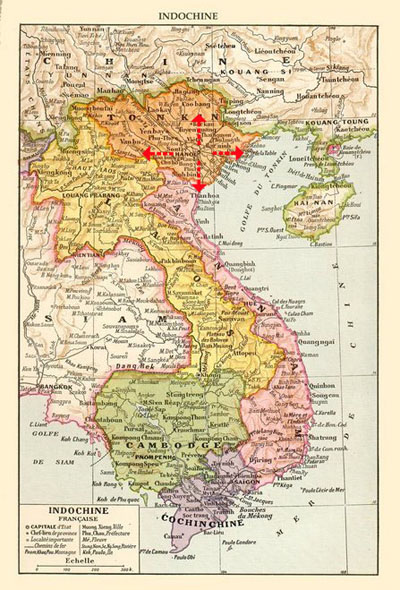
So if you look to my marker you have PLEIKU 187km
and Ban Me Thuot 3km.
The markers were supposedly positioned every
kilometer along the road. This one would have stood at
"point
kilometrique 187" (PK187).
187km
south of Pleiku and 3km north of Ban Me Thuot.
The two towns being South of Hanoi, on this section of
Route Coloniale 14,
the kilometer count would have started from Pleiku going
south towards Ban Me Thuot.
I hope that makes sense!
Jean-Luc (French John)
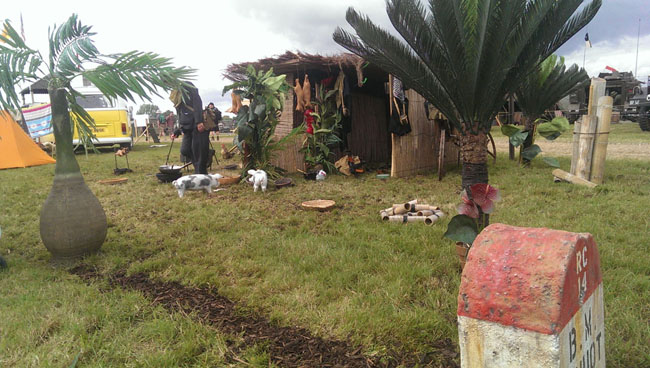
The real ones,
the BW photo is the only Indochina area one, all the others are later ones Vietnam and post Vietnam
|